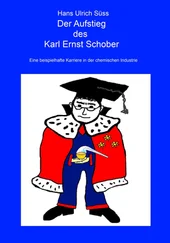Our stay is only a short one here, where we are able to put up a fight in the area Grosswardein—Cegled—Debrecen. The Russian hordes move fast, almost exclusively by night. They remain stationary during the day well camouflaged in the woodland near the roads or in maize fields, or keeping under cover in the villages. Bombing and aerial attack becomes of secondary importance to reconnaissance, for targets must be recognized before it is possible to do any vital damage. There is at present no cohesion on the German front; there are merely isolated battle groups hastily improvised by welding together units which have either fought their way back from Rumania or have previously formed part of the lines of communication troops in Hungary. These units are a medley of all branches of the army. At special focal points the names of crack formations appear: infantry regiments with great traditions, armored divisions, S.S. formations, all old acquaintances of ours and friends with whom we have shared the hardships of the arduous years in Russia. They love and esteem their Stukas and we feel the same. If we know that one of these units is below us we can be sure there will be no untoward surprises. We know most of their flying control officers personally, or at any rate their voices. They indicate to us every nest of resistance however small, and we then attack them with everything we have got. The ground units follow up our attack with lightning speed and sweep everything before them. But the enemy’s numerical superiority is so immense that the biggest local suc cesses are merely a drop in the bucket. The Russians are established to right and left of these engagements and we have not soldiers enough to hold them there, and another break-through follows with the result that even those units who are standing firm are compelled to retire lest their line of retreat be cut.
This happens here time and again until we are back on the Theiss which is to be held as a new defense line. This river is narrow, and in a war with modern technical resources does not represent much of an obstacle. At Szeged the Russians have very soon gained a strong bridgehead which we are unable to dent, and from which they make a swift thrust N.W. towards Kecskemet. My Wing has moved back once again and we are now at Farmos, W. of Szolnok, on the railway line from Szolnok to Budapest. Our airfield is frequently visited by four-engined American bombers which have hitherto concentrated their attentions on the railway bridge at Szolnok.
We have no complaints about our rations here because Niermann has obtained permission to shoot game and one can almost speak of a plague of hares. Every day he returns with a big bag; Fridolin is sick of the very sight of a hare. Sometimes now there is a real nip in the air, the year is making giant strides towards the winter. When taking my evening cross country run in the neighborhood of Farmos I succumb to the fascination of the plains in a way I would not have thought possible for a mountaineer like myself.
We are out mostly in the vicinity of the Theiss beyond the river, but also on our side of it as the Soviets have succeeded in forming bridgeheads on the west bank at several places. Our targets, as in the case of all previous river crossings, are concentrations of material on the river bank and on the approach roads, in addition to the constantly newly built bridges and the traffic across the river which is partly carried out with very primitive methods. Rafts, old sailing craft, fishing boats and private pleasure boats all ply across the narrow Theiss. Ivan has lost no time in collecting together this heterogeneous ferry service. It is chiefly active at first in the area between Szeged and Szolnok, later also further north.
The creation of many bridgeheads is always a warning that the Soviets are piling up material preparatory to a fresh advance. A minor offensive of our own is being successfully conducted in the area Szolnok—Mezotuer—Kisujzalas—Turkewe with the object of upsetting these preparations. We fly incessantly in support of it. The new Russian assault on the Theiss is considerably delayed and weakened by this interruption of their lines of communication, at least in this northern sector, but they are able to keep expanding the big bridgehead at Szeged and joining it up with a smaller one further north.
At the end of October the offensive is launched from the whole of this area; it begins with a thrust N.W. and N. from E. and S.E. against Kecskemet. Its objective is clear: to achieve the collapse of our defense line on the Theiss and to push forward across the plain as far as the Hungarian capital and the Danube. Ivan is extremely active in the air. He appears to have occupied the whole batch of airfields round Debrecen, and we are again in action against far superior numbers thereabouts.
We are further handicapped by the loss of a number of aircraft shot down by flak, and supplies and replacements leave much to be desired. The Soviets cannot claim the credit for our predicament; they can thank their Western allies who have seriously imperiled our communications by their four-engined attacks on railway stations and towns. The patrolling of railway lines and roads by American Jabos does the rest.
We lack the indispensable means of protecting our traffic routes owing to shortage of man-power and material. With the few aircraft left to my wing, including the anti-tank flight, I often take off on a sortie in the area S.E. of Kecskemet. Our aircraft strength, for the reasons set forth above, has been so greatly reduced that one day I go out alone, escorted by four FW 190s to attack the enemy’s armor in this area. As I approach my objective I can hardly believe my eyes; a long distance north of Kecskemet tanks are moving along the road; they are Russians. Above them, like a bunch of grapes, hangs a dense umbrella of Soviet fighters protecting this spearhead. One of the officers escorting me knows Russian and promptly translates for me everything he understands. The Soviets are again using almost the same wave length as ourselves. They are yelling at one another and making such an appalling din that it is a wonder anyone understands a word the other is saying. My interpreter in the 190 makes out this much:
“Calling all Red Falcons—a single Stuka with two long bars is coming in to attack our tanks—we are sure it is the Nazi swine who shoots up our tanks—there are some Fockes with him (my escort). You are all to attack the Stuka, not the Fockes—he must be shot down today!”
During this pandemonium I have long since come down and made an attack. One tank is on fire. Two FW 190s are weaving above me trying to draw off a few Lag 5s. The two others stick to me, maneuvering as I do; they have no intention of leaving me alone which is bound to happen if they engage in aerial combat with any Ivans. Twenty or thirty Lag 5s and Yak 9s now turn their attention to us; apparently the control officer on the ground directing the fighters is near the tanks, for he yells like a stuck pig: “Go on, go on and shoot the Nazi swine down. Don’t you see one tank is already on fire?” For me this is the surest confirmation of my success. Every time one of them attacks I make a sharp turn just as he is bearing down on me; his speed
prevents him from following my maneuver and he loses his firing position because he is carried out of range. I then bank round again and come in behind him, even if at some distance away. Although I am sorry to waste my anti-tank ammunition I fire two 3.7 cm. shells after him; of course I shall want them later for other tanks. Even if they now miss their mark the chap they were intended for cannot have failed to observe their trail and he gets a shock at seeing these fire balls streak close by him. Now again one of those I have fired at yells: “Look out—be careful—didn’t you see? The Nazi swine is firing back. Look out.” He bellows as if he had already been shot down. Another, certainly the leader of the formation:
Читать дальше












